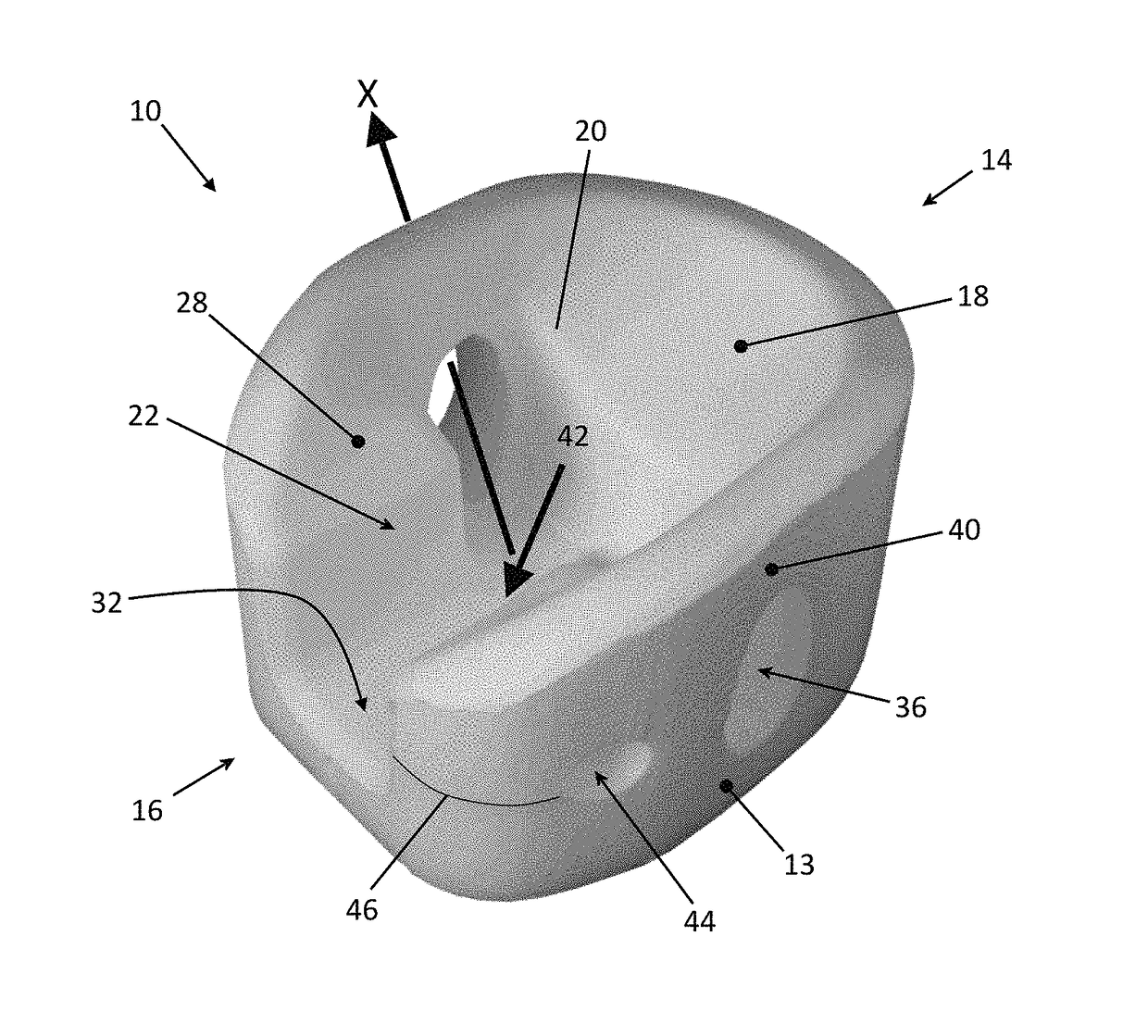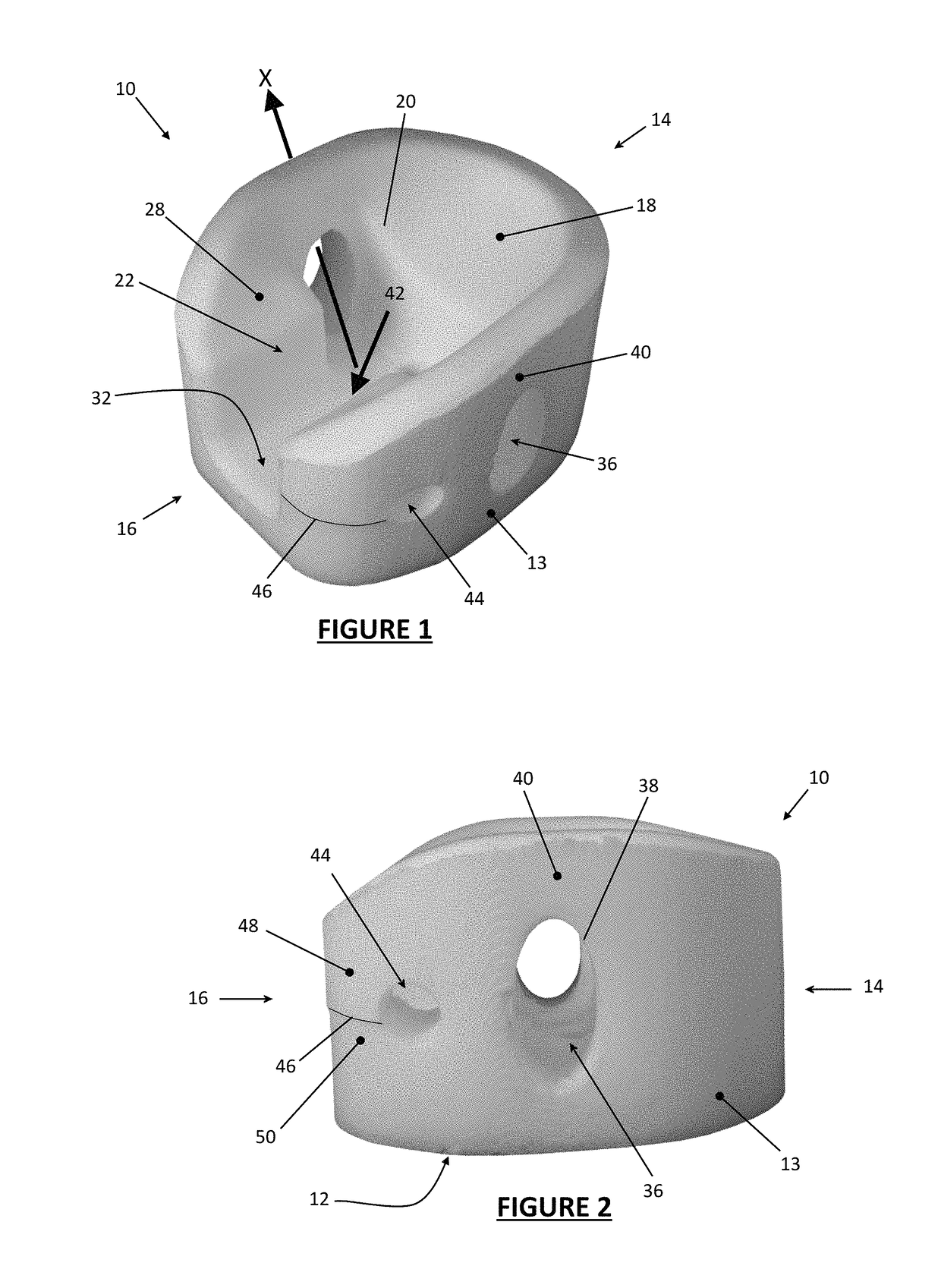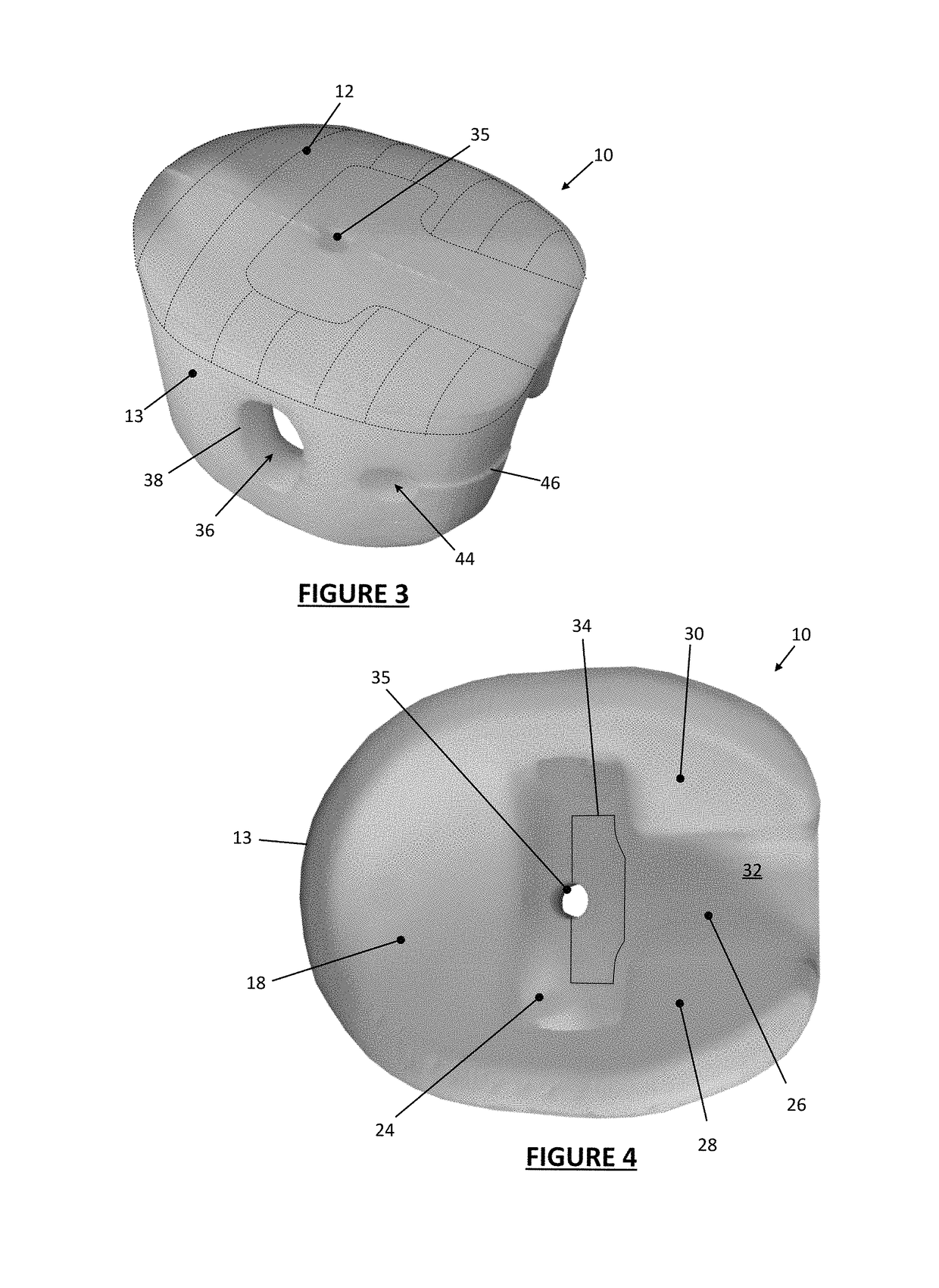Head support
a head support and head technology, applied in the field of head support, can solve the problems of abnormal spine position, constricting trachea and larynx, and not desirable, and achieve the effect of reducing the risk of head injury, and improving the quality of li
- Summary
- Abstract
- Description
- Claims
- Application Information
AI Technical Summary
Benefits of technology
Problems solved by technology
Method used
Image
Examples
first example
[0040
[0041]The first head support 10 represented in FIGS. 1 to 4 is intended for use in surgical procedures, with the patient in the prone position. It comprises a unitary body of foam material. Suitable foams for the purpose are known to the skilled person. Polyurethane foam is one suitable material. The material is compliant, which is to say that it is capable of yielding somewhat under the pressure applied to it in use by the face of the patient. It is also sufficiently resilient to recover its original shape after removal of that pressure.
[0042]The head support 10 may be offered as a single use (disposable) item. By avoiding re-use, transmission of infection from one patient to another is avoided without need of elaborate measures for disinfection. It may be supplied to the user in a sealed bag, giving protection against its contamination prior to use.
[0043]The head support 10 in this particular embodiment does not require, and is not provided with, any external frame or cradle....
second example
[0055
[0056]FIG. 5 represents a second head support 10a for this purpose. This differs in size and proportion from the first head support 10 but possesses otherwise equivalent features of shape and function. The same reference numerals are used in FIG. 5 as in the earlier drawings and the description of the relevant features will not be repeated. A conspicuous distinction between the first and second head supports 10, 10a is that in the latter the longitudinal extent of the cheek support portions 28, 30 is smaller in proportion to the size of the forehead support portion 18, this being a reflection of the relative proportions of the head of a child and of an adult.
[0057]Referring now to the remaining drawings, namely FIGS. 6, 7 and 9; these are perspective views of various variations of the design of head supports embodying the invention.
third example
[0058
[0059]The head support shown in FIG. 6 is of a shape and size, which has been designed for supporting the head / face of a child / infant and has similar features to those described previously. For the avoidance of repetition, identical reference signs have been used to identify identical features in FIG. 6 as they have in relation to the previous drawings.
[0060]The main difference between the embodiment shown in FIG. 6 and that shown, say, in FIG. 5, which is also for an infant, is that the shape of the head support 10, when viewed from above, is more U-shaped than rounded. In this embodiment, the viewing opening 36 is generally D-shaped, whereas in previously-described embodiments, it is generally oval. Nevertheless, the head support 10 has a curved portion 18, which, in use, supports the forehead of a prone-positioned patient, as well as curved portions 28, 30 for supporting the cheeks of a prone-positioned patient. The central void 22 provides an opening such that the ocular / na...
PUM
 Login to View More
Login to View More Abstract
Description
Claims
Application Information
 Login to View More
Login to View More - R&D
- Intellectual Property
- Life Sciences
- Materials
- Tech Scout
- Unparalleled Data Quality
- Higher Quality Content
- 60% Fewer Hallucinations
Browse by: Latest US Patents, China's latest patents, Technical Efficacy Thesaurus, Application Domain, Technology Topic, Popular Technical Reports.
© 2025 PatSnap. All rights reserved.Legal|Privacy policy|Modern Slavery Act Transparency Statement|Sitemap|About US| Contact US: help@patsnap.com



